Clear Epoxy Pixelated Coffee Table

Full Disclosure: Ecopoxy, the company that makes the Flowcast epoxy I used in this project, sponsored this project. All opinions are my own.
Have you ever had a project go so horribly wrong that it was completely unsalvageable? It's pretty rare for me, usually, I can recover from mistakes. It's really only happened to me once. It was my first time working with an epoxy resin. I was making a clock ( you can see it here) and I tried to pour too much epoxy in a single casting, the epoxy overheated as it cured, it boiled, and the whole project was completely ruined. I was pretty hear broken, I had to start again from scratch and I've been wary of working with epoxy ever since.
In fact, I haven't touched epoxy since that project. It might've stayed that way too, but recently Ecopoxy reached out to me and asked if I wanted to test out their Flowcast epoxy, which is an epoxy that's specifically made for deeper pours. It cures very slowly, so it's resistant to overheating and boiling. I've always been an advocate for facing your fears so I said "sign me up!", they sent me a box of epoxy and I got to work on creating this project.
Seeing as it was the clock project that emotionally scarred me so much in the first place, I decided to take that same concept and completely redo it as a new bigger, badder, version of itself. Same idea, completely new application with a few subtle tweaks to the design and pattern.
This table is 1/3 maple, 1/3 walnut, 1/3 clear epoxy, and 100% my favorite coffee table project yet. Let me show you how I made it!
Before we start this project I should let you know that there is a video version of this post available. You can watch by simply clicking play here!
I honestly think it's the best way to see how this project is done, but I know some of you prefer to read about your projects. so if that sounds like you, don't worry I've got you covered there too, just keep on scrolling!
Like any good woodworking project, the first step of this project was milling my raw lumber. I had to make sure it was straight, square, and ready to be used in this project.
I started by cutting down the 10' long pieces of maple and walnut I bought into more manageable 4ft and 2ft long pieces. I didn't need anything 10' long and pushing long lumber through some of the milling machines is a real pain. So breaking them down into smaller sizes really makes the milling process a lot easier. The next stop after the miter saw was the jointer. I used my jointer to square up 2 faces on each piece. Then I used my planer to square up a 3rd face on each piece.
Milling lumber is really time-consuming, but it's also super enjoyable. Having the wood go in one side of a machine all rough and furry and then come out the other side looking smooth and ready to be used is very satisfying. It's like one of those HGTV home transformations shows... but just for a single piece of wood.
With 3 faces of the lumber squared and flattened I could start ripping my wood into long thin strips using the table saw.
I cut each piece of wood into as many 1" wide strips as I could manage. I picked 1" partially because I liked the look and partially because it maximized the yield of the piece I was using. Win-win. I was careful to keep the face of each piece that I ran through the jointer against the table saw fence on all of the cuts. That kept all of my blocks straight and true, while simultaneously squaring up the 4th and final face.
I then took the dozens of long thin wooden sticks over to the miter saw and chopped them to random lengths. They were all somewhere between 4' and 6" long. Anything smaller than 6" is too awkward to work with and anything longer than 4ft would've been longer than the final dimension of the table. I also cut out any sections of pieces that had obvious defects in them like checks and splits.
Creating the wood pattern for this project was probably my favorite part of this whole project. I gathered all of my wood blocks over on my assembly table and started arranging them into the pattern you saw earlier. I covered the table with plastic to protect it from any rogue glue drops and marked out the approximate dimensions (26"x41") of the tabletop in green painter's tape. The painter's tape kept me from accidentally making the tabletop too big or too small and kept me organized while I worked.
I started with a rough idea of what I wanted the top to look like, but I'm basically just freewheeling it here. I laid down blocks, shuffled them around, and agonized over small details for way too long until I had a pattern I liked.
Then I started applying the glue. I laid down a thick bead of carpenters glue on each block. I was careful to avoid getting glue too close to any edges or negative spaces because I didn't want the glue to squeeze out into them once I clamped everything together.
After I was done squeezing out half a bottle of glue I clamped everything together using a ragtag assortment of clamps. I tightened them down until all of the gaps were closed and let them sit for 30 minutes while the glue dried.
After the clamps came off, things were looking a little bit rough, so I had to do a bit of cleanup work.
I used my track saw to square up the ends of each half of the tabletop. Looking at these photos and the video it's pretty obvious that I should've been more diligent about my organizing my pattern because I ended up cutting off a lot of excess wood which was wasteful. I hate wasting good wood!
Then it was over to my drum sander, which is basically a big 19" wide welt sander mounted overtop of a conveyor belt. I used it to smooth out the top of each half of the tabletop. This took care of any alignment issues between individual pieces and removed any glue that squeezed out.
I can't say enough good things about my drum sander, it was an expensive tool, but for the work I do, it's saved me hundreds of man-hours and I'd buy it again in instant.
In order to cast this tabletop in epoxy, I needed a form to contain it.
I bought a sheet of 4'x8' melamine at the hardware store (the kind you'd make cabinets out of) and started cutting it up into smaller pieces using my track saw and table saw. I started by cutting the sheet in half and set one piece aside to be the bottom of the form.
Then I took the other half over to the table saw and ripped four 3" x 48" long strips off of it. Those pieces would be the walls of the form. I screwed two of them along the outside edge of the bottom piece. Then I took the other two pieces, cut them, and screwed them in place to create a form with an inside dimension of 27" x 42"
A good epoxy form should be completely free of any points where the epoxy can leak out. That meant I had to go around and seal all of the corners by caulking them with silicone. I applied a thin bead the whole way around the form and smoothed it out using my finger. I used regular, off-the-shelf, silicone that I had left-over from a kitchen renovation project.
You'll notice the base of the form is significantly bigger than the actual casting area of this particular project. I made it that way because I want this form to be re-usable. I plan to use it for multiple casting and I wanted the freedom to do projects that are even larger than this one.
In order to prevent the epoxy from sticking to the melamine, I coated the entire interior space in a product called Sonite Wax. Sonite Wax is a release wax typically used in urethane moulding, but I had a hunch it might work for epoxy too. There are a few other ways to do this, some people use tuck tape/red tape, but the Sonite wax is faster, makes less of a mess and it's cheaper too. I brushed it on, waited 30 minutes for it to dry, and then buffed off the excess using some blue shop towels.
One challenge with any epoxy pour is knowing exactly how much epoxy to mix. Too little and you have to mix more in the middle of your pour, too much and you waste valuable materials. It's a fine balance to strike, and ideally, you mix just enough to get the job done.
So, what I did to calculate the right amount of epoxy to mix was I broke everything down to a per linear inch measurement of negative space. For every linear inch of negative space the tabletop had, I needed to mix ~20ml of epoxy. Sorry for mixing imperial and metric units, unfortunately, that's just how my brain works.
I measured the gaps between each row of wood, jotted down the measurement, added them all up, and then multiplied that number by 20ml. Which in this case totaled out to just under 6L, which I rounded up just to be safe.
The Flowcast epoxy I was working with came in 2 parts, an A and a B, that you mix together at a 2:1 ratio. So I mixed 4L of A along with 2L of B into a big bucket.
You'll notice here in the photos that I'm pouring the epoxy from a pretty high height (for a dramatic effect, obviously) but that's actually a bad idea and I regret doing it that way. Pouring like this introduces a lot of turbulence into the epoxy and creates a lot of bubbles. Lucky for me the epoxy I was working with was really good at releasing bubbles as it cures, but this is a bad habit to be in, especially for clear epoxy.
This was my second favorite part of the project, pouring the epoxy. I lowered the bucket and began to slowly pour the epoxy out into the form. I'd pour out about 1/4" of epoxy, give it a little bit of time to settle into all of the various voids and negative spaces, and then pour out a bit more. I did this over and over again until the epoxy was flush with the top of the wood. I did this over the course of 30 or 40 minutes, I was in no rush since this was an extremely slow curing epoxy. It's got a pot life of over 8 hours, so as long as I got it out of the bucket and into the form inside of 8 hours I was ok. Some epoxies cure a lot faster, so there's more urgency, but this was nice and laid back.
For the smaller negative spaces, I did my best to carefully pour the epoxy into them without spilling too much, but by the end, it got pretty messy. I think in the future I'll try to use something smaller for these like a syringe, or, at least a smaller bucket.
Once the bucket was empty I left the epoxy to cure for 72 hours.
3 days later I returned to the shop and began the demoulding process.
Thanks to the Sonite wax this was actually really easy. I unscrewed 3 of the 4 walls and used a hammer and chisel to gently separate the tabletop from the form. I really just had to get it started the whole way around the perimeter and then the top popped out without much persuasion.
No damage to my form, it was good as new and ready for its next casting!
When I built the form I made it a 1" wider and longer than I wanted the finished tabletop to be, this gave me a 1/2" of extra epoxy the whole way around the perimeter of the tabletop. I did this just in case I had to get a little rough with the tabletop during the demoulding process. Once I had the tabletop free of the mold I setup my track saw and cut off all of the excess epoxy.
It was pretty cool cutting through the clear epoxy, you could actually see the blade plunging down into it and cutting through it.
So, like I said, during the epoxy pour things got a little messy, especially towards the end. By the time the epoxy fully cured I had a thin layer of epoxy covering about 75% of the tabletop's surface, which wasn't what I was going for at all haha. No worries though, drum sander to the rescue!
I ran the tabletop through the drum sander repeatedly, with each pass removing a thin layer of epoxy until finally the maple, the walnut and the vein of clear epoxy running down the center of the tabletop were all flush with each other. I was actually a bit worried that the drum sander wouldn't be able to cut the epoxy very well, but it handled it like a champ.
After the drum sander, I used a random orbital sander to sand the epoxy to 320 grit, and then I wet sanded the epoxy up to 1500 grit using a sanding block.
I've been doing a lot of round overs on my projects lately, but for this one, it just didn't feel right. I wanted to do something a bit more geometric and angular feeling, so I loaded up a chamfer bit into my cordless trim router and cut a 45 degree angled reveal on the bottom side of the table.
I was a bit worried I wouldn't like it at first, but I LOVE how it turned out. Especially where it intersects with the clear epoxy, it gives a very gem-like feel. 10/10 would chamfer again.
Once the tabletop was more or less finished, sans the finish of course, I set it aside, and started cutting all the metal I would need for the table legs. I didn't want a bunch of metal bits flying around while the finish was still wet so that would have to wait.
I grabbed some 1 1/4" x 1 1/4" square tube steel off of my materials rack and got to cutting using my cold cut metal saw (by the way, this cold cut saw is about a million times better than my old abrasive metal saw. It's quieter, faster, makes less of a mess AND gives better cuts!). I cut eight pieces of the square tube steel that were 15" long, as well as four 2" x 2" pieces of flat plate steel.
I set up my new rolling welding table ( which is actually an updated version of this project) and got to work welding the legs together. I'm pretty new to welding, so I don't feel comfortable giving a ton of advice about welding but I'll explain my basic workflow.
I started by tacking the legs together with small little spot welds. These welds are weak and easy to break by simply twisting the metal. If I messed up and wanted to retry a weld it wasn't a big deal to snap it off and try again. So I'd tack everything together, check it for square, and then I'd go about fulling welding together all of the seams.
To weld the seams together I made small zig-zags with the welder trying to "stitch" the two metal pieces together. I got a few nice looking welds, but most of them were pretty ugly haha. Again, I'm new, so I just focus on getting a good welding bead between the two pieces, and then I can worry about making it pretty later.
Behind the shop, I set up a little outdoor grinding station and began cleaning up all of my ugly welds using an angle grinder and a flap paddle abrasive disc. I used to use grinding disc for this process, but the flap paddle discs seem to cut faster and they leave the metal looking nice, smooth, and polished afterwards. So I've started exclusively using the flap paddle discs.
A few hours of grinding later and I had some respectable-looking table legs that were ready to be finished!
At this point, I had 2 finishes to apply, one for the table legs and one for the tabletop. I decided to spray on both finishes. Which is new for me. Well, not for the table legs. I'm pretty comfortable using 10 dollar cans of spray paint on table legs. I used a single can of flat black spray paint to coat both legs. I got about 2.5 coats of paint on them before the can ran dry. Then it was time to to the tabletop...
Spraying the clear coat onto my tabletop was a different story though. I had a cheap paint sprayer that I used to spray some smaller projects a couple of years ago, but nothing like this. I've seen a lot of other makers using sprayers on their projects and getting great results, and I really wanted to be part of the cool kids club so I decided to just go for it.
I loaded up my favorite varnish into the hopper, thinned it by adding 30% water, and started spraying. There was definitely a learning curve with the sprayer, and I had more than one technical issue along the way, but by the end of the day, I was laying on some pretty good coats.
I found I got better results by spraying on thicker coats, but the thicker coats combined with the added water meant each coat took a lot longer to try than I was used to, so I was in the shop pretty late that night.
My mounting solution for the legs was dead simple. I tapped 2 holes on each mounting plate (I should've done this prior to painting, but luckily I managed to avoid scratching the paint on either leg) by first drilling a 1/8" hole and then widening it using a 5/32" drill bit. To drill through the steel I just used a regular old drill bit, but I made sure to apply a lot of downward pressure and use the slowest speed on my drill.
Once I tapped the holes, I positioned the legs on the tabletop, piloted out some holes, and then used some #10 3/4" inch screws to secure them in position. Nothing fancy, but it's a nice solid hold.
Fun fact: I actually figured out the mounting locations of the legs prior to building the legs. I had to work backwards because I didn't want the mounting plates to be visible through any of the clear epoxy negative spaces. It took me a while to figure out a layout that worked on both the walnut and maple sides of the table, but I got there.
Once the legs were attached I loaded up the table into the back of my truck and took it home. I set it up in my living room and started snapping all of my photos for this post.
I'm really happy with how this project turned out and I'm happy that I've finally gotten over my fear of working with epoxy. I learn a lot doing this project and I feel like I could do it even better next time. Which might be pretty soon because I've actually got a lot of the Flowcast epoxy left over. I'm thinking my next project might be a little more round in nature... we'll see though. Stay tuned!
Alright, that's it for this build everyone. Thanks for reading! I hope you enjoyed this build, if you did you might want to check out my YouTube ( YouTube.com/ZacBuilds) and Instagram ( Instagram.com/ZacBuilds/) to see the rest of my builds.
Big thank you to Ecopoxy for sponsoring this build. Their Flowcast epoxy was great and a lot more user friendly than any other epoxy I've used before.
See you guys on the next build!
Enjoyed the project?
Resources for this project:
See all materials
Comments
Join the conversation
-
 Brenda Miller
on Oct 01, 2023
Brenda Miller
on Oct 01, 2023
Wow, you are one talented man!! I love the table.
-
-
 Lisa Fauerbach
on Oct 04, 2023
Lisa Fauerbach
on Oct 04, 2023
Absolutely stunning
-




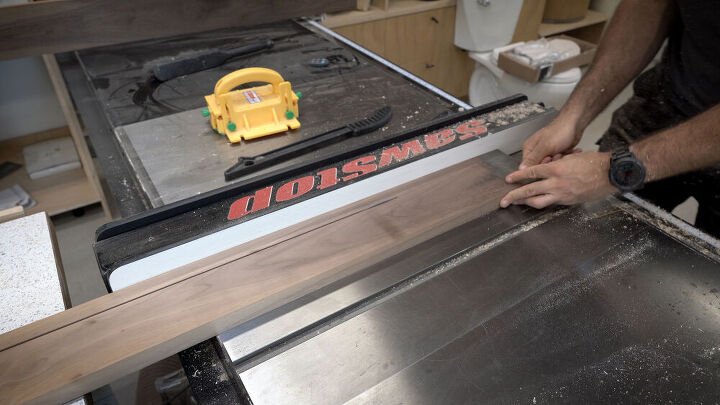











































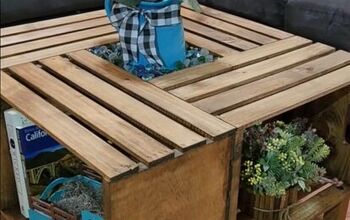
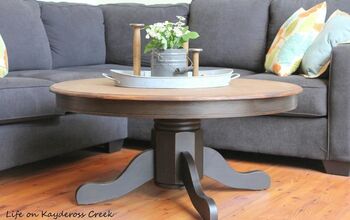

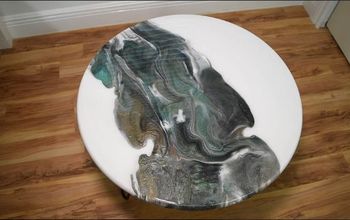
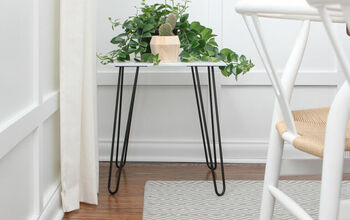
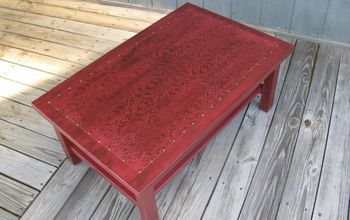

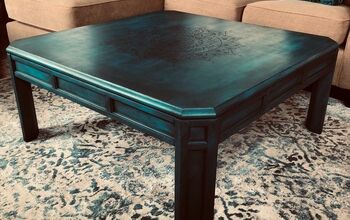
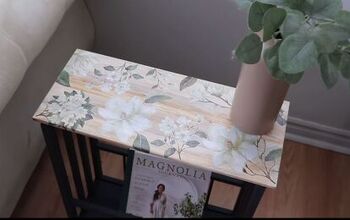

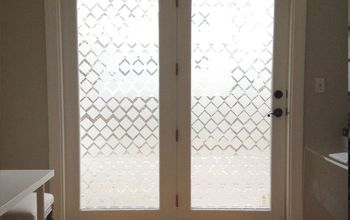
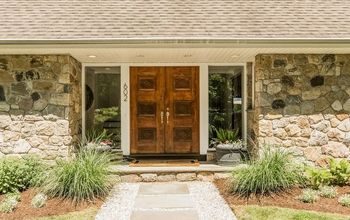


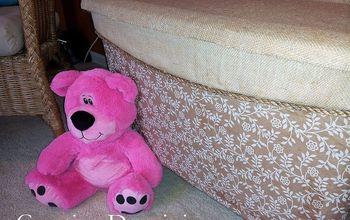



Frequently asked questions
Have a question about this project?
Beautiful just beautiful.